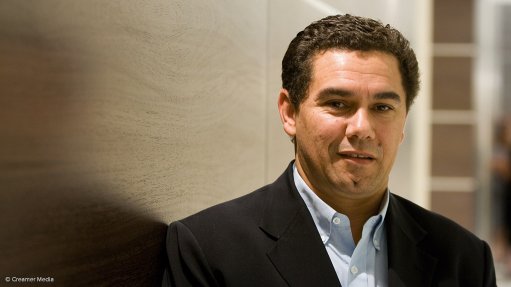
Dr Alistair Ruiters
Photo by: Duane Daws
JOHANNESBURG (miningweekly.com) – The biggest challenge facing South Africa’s ferrochrome industry was no longer China, but local energy supply constraints, chrome producer Afarak executive chairperson Dr Alistair Ruiters said on Wednesday.
Speaking at the seventh South African Ferro-Alloys conference, convened by MetalBulletin Events, he said power supply would remain a problem for the foreseeable future.
Industrial users would likely face further electricity price increases, more blackouts and further buy-back requests, undermining the competitiveness of the local ferrochrome industry, he noted.
South Africa was also at risk of losing market share, not only to China, but also to the rest of the world, as other countries, such as Finland, had seen a reduction in energy costs.
Ruiters highlighted the energy supply constraints as a significant concern, stating that the industry was becoming increasingly “debeneficiated” as it exported more raw ore instead of value-added products.
He pointed out that South Africa’s chrome ore exports to China had grown significantly from 100 000 t/y in 2004 to 6-million tons a year in 2013.
“South Africa today supplies more than 50% of China’s ore requirements,” he added.
Ruiters noted that the ferrochrome industry had, about five years ago, formed a lobby group to seek government intervention; however, despite several commitments to intervene through export taxes and legislation, nothing had happened.
“[Further], other than lobbying government, the industry had [also] not organised itself to deal with the crisis,” he stated, pointing out that it was problematic that there was no common cause between miners and ferrochrome producers.
In addition, the platinum industry was also now a major player in the ferrochrome market, which made the industry even more diverse.
Ruiters believed any solution to the challenges facing the ferrochrome sector would have to involve industry coming up with a response, as government’s response to “debeneficiation” had, to date, not taken the form of a common position.
He explained that some in government believed that the ferrochrome industry should just be left to die, while others felt that the only way of shaping an industry’s behaviour was through “regulating it to death”.
“The problem is that these multiple objectives create unintended consequences and significant confusion in the minds of investors.”
He further said that, in his opinion, the fundamental problem was that government sought to regulate the industry, while also attempting to facilitate and create an enabling environment.
“On the government and industry side, we have not gotten to a space where we can respond. We are watching the crisis unfold and finding our feet [instead of reacting],” he said.
Ruiters urged the country to take action to ensure it did not become mainly a chrome miner, as opposed to a ferrochrome producer.
He said that, as the industry currently lacked the ability to organise itself, government would have to play a leadership role.
Other options South Africa could consider in building up its ferrochrome industry included diversifying its ore and ferrochrome sales away from China, towards a bigger customer base, as well as potentially considering moving into new niche products.